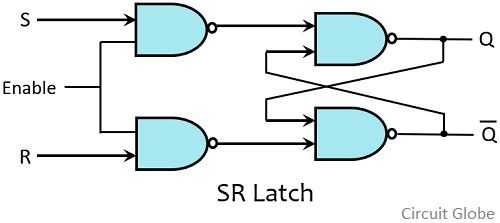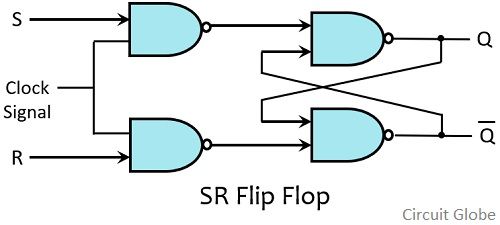Both latch and flip-flop are considered as the fundamental elements of the electronic system. The crucial difference between latch and the flip flop is that a latch changes its output regularly according to the change in the applied input signal when it is enabled. As against in a flip flop, the output changes with input in conjunction with the clock signal. This means the clock signal acts as the control signal to display the output according to the changed input.
We know that logic circuits, memory chips and microprocessors are the digital integrated circuits that are used to store and transmit data in the form of bits. This is the reason these are referred as the fundamental building blocks of electronic systems.
Thus, latches and flip flops are considered as the derived sequential circuits that are used to store information. Here we will discuss all those factors which differentiate a latch from a flip-flop.
Content: Latch Vs Flip Flop
Comparison Chart
| Basis for Comparison | Latch | Flip Flop |
|---|---|---|
| Basic principle | It follows level triggering approach. | Flip flop utilizes edge triggering approach. |
| Designed using | Logic gates | Latches with a clock. |
| Clock Signal | Absent | Present |
| Sensitivity | It is sensitive to applied input signal when enabled. | It is sensitive to applied input along with clock signal. |
| Power requirement | Less | More |
| Operating Speed | Fast | Comparatively slow |
| Type of operation performed | Asynchronous | Synchronous |
| Circuit analysis | Complex | Quite easy |
| Robustness | Less | Comparatively more |
| Dependency of operation | Its operation depends on present, past input and past output binary values. | Here the operation relies on present, past input bits and past output along with clock pulses. |
| Type | S-R, J-K, T and D latches. | S-R, J-K, T and D Flip flops. |
| Use as a register | Not supported | Supported |
| Required area | Less | More |
Definition of Latch
Latches are the sequential logic circuits that are designed using logic gates and are used to store binary information. These are level triggered thus operate when they are enabled. These are also known as bistable multivibrator because of having two stable states.
It operates in a way that when the enable pin is active, then every time with the change in input, the output gets changed. This means with the change in input, the stored information also changes. The figure below represents the logic circuit of the S-R latch:
Here when the enable signal is active, then each time with the change in input, the stored binary information also changes. Thus, it is said to be level sensitive.
Definition of Flip flop
Flip flops are also considered as sequential logic circuits as their present output value depends on present and past input and past output. However, in the case of flip flops clock signaling plays a crucial role because flip flops are necessarily designed to operate with a clock.
So, in the case of the flip flop when input is changed from one value to another then the stored bit changes only when there is a change in the clock signal either from low level to high or high to a low level. The figure below represents the circuit of S-R flip flop:
Therefore, we can say a flip changes the output according to input but with respect to the clock signal. So, here the clock signal is the control signal, and due to this, the flip flop provides timely output.
Key Differences Between Latch and Flip Flop
- The key factor of differentiation between the latch and the flip flop is that the latch changes the output according to the change in input continuously. While a flip flop changes the output only when the clock pulse is triggered along with the change in input.
- In latches as the output depends only on the applied input thus hold no need for an external clock. However, flip- flops necessarily require an external clock signal for its operation.
- The absence of a clock causes the latches to operate asynchronously while as clock signal synchronizes the operation of the flip flop thus flip flop operates synchronously.
- The requirement of power for the circuit to operate is less in the case of latches than a flip flop. This is due to the presence of a clock signal in flip flop.
- The circuit analysis of latches is quite difficult in comparison to flip flops.
- Latches operate on present and past input and past output values. But flip flop along with operating in the present and past input and past output also considers the clock signal.
- Latches are level triggered thus functions whenever the input changes from one binary level to another. While flip flops are edge-triggered, thus activates when the clock signal goes from either low to high or high to low.
- Latches are designed using logic gates, but flip flops are a combination of pair of latch and clock as a single unit.
- Flip flops are used as register, but latches are not. This is so because though registers store binary data but also require clock signal in order to perform real-time transmission thus can be replaced by flip flops only that make use of clock signal.
- The area required by the latches are small, but that of the flip flop is large because flip flop is a pair of latches with the clock.
- Flip flops are more robust than latches.
Conclusion
Thus, from this discussion, we can conclude that flip-flops are superior to latches as flip flops are designed to provide timely output while latches provide continuous output according to change in input once enabled.



Nice explanation. Awesome job. Thank you very much.